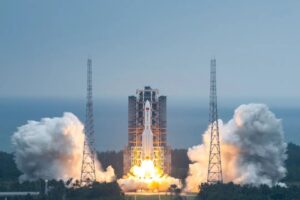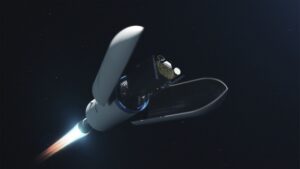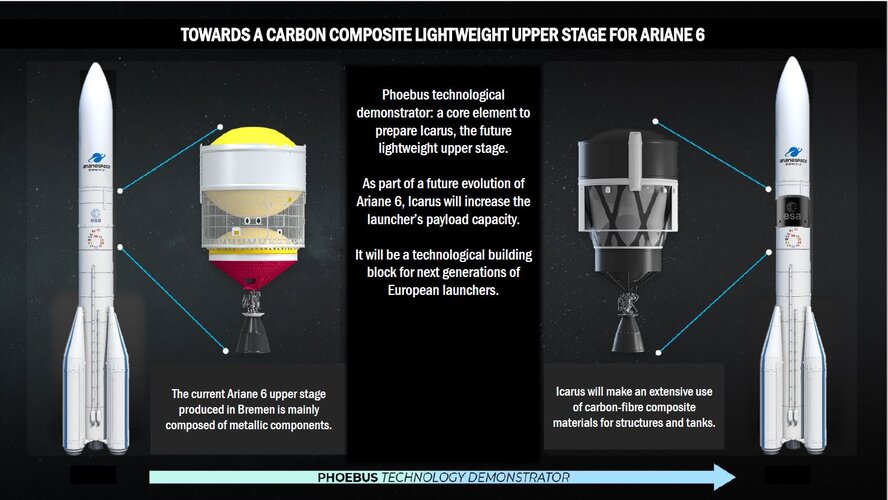FCC proposes new bureau for space activities
Thursday, 03 November 2022 14:04
The chairwoman of the Federal Communications Commission announced plans Nov. 3 to reorganize the agency and create a bureau devoted to the its increasing work with space systems.
The post FCC proposes new bureau for space activities appeared first on SpaceNews.
Testing Galileo for space
Thursday, 03 November 2022 13:00 Video:
00:06:36
Video:
00:06:36
Galileo has grown to become Europe’s single largest satellite constellation, and the world’s most accurate satellite navigation system, delivering metre-level positioning to more than 3.5 billion users around the globe.
It all began at ESTEC’s Test Centre, Europe’s largest satellite testing facility. This is where the very first positioning fix took place in March 2013, after the launch into orbit of the initial four IOV satellites. Following that, all 34 Galileo Full Operational Capability satellites also passed by ESTEC for their pre-flight testing.
This 3000 sq. m environmentally-controlled complex, operated and managed by European Test
Rocket from Chinese space station module launch predicted to make uncontrolled reentry Nov. 4
Thursday, 03 November 2022 12:30
The large first stage of the Long March 5B rocket which sent the Mengtian space station module into orbit earlier this week is set for an uncontrolled reentry Friday, Nov.
SpaceX launches Hotbird 3G to extend Eutelsat’s broadcast coverage
Thursday, 03 November 2022 12:19
SpaceX launched the second of two satellites for Eutelsat Nov. 3 to replenish one of the largest broadcast systems in Europe, the Middle East and Northern Africa.
The post SpaceX launches Hotbird 3G to extend Eutelsat’s broadcast coverage appeared first on SpaceNews.
SpaceX launches Hotbird 13G to extend Eutelsat’s broadcast coverage
Thursday, 03 November 2022 12:19
SpaceX launched the second of two satellites for Eutelsat Nov. 3 to replenish one of the largest broadcast systems in Europe, the Middle East and Northern Africa.
The post SpaceX launches Hotbird 13G to extend Eutelsat’s broadcast coverage appeared first on SpaceNews.
Northrop Grumman supports successful United States Space Force-44 mission
Thursday, 03 November 2022 09:26 Northrop Grumman played a critical role in the integration, launch and deployment of the United States Space Force (USSF)-44 mission that successfully launched Monday from Kennedy Space Center, Florida. Several hardware and software platforms were provided to deliver multiple missions for customers including highly complex payloads from multiple industry partners.
The Long Duration Propuls
Northrop Grumman played a critical role in the integration, launch and deployment of the United States Space Force (USSF)-44 mission that successfully launched Monday from Kennedy Space Center, Florida. Several hardware and software platforms were provided to deliver multiple missions for customers including highly complex payloads from multiple industry partners.
The Long Duration Propuls US Space Force Space Systems Command Tetra-1 Launches
Thursday, 03 November 2022 09:26 Delivered by Millennium Space Systems, a Boeing (NYSE: BA) company, Tetra-1 launched aboard USSF-44 from Cape Canaveral, Florida.
The program was the first prototype award under the U.S. Space Force's Space Systems Command's Space Enterprise Consortium Other Transaction Authority charter. And Millennium Space Systems was the first to deliver under the OTA.
"With the drive toward bett
Delivered by Millennium Space Systems, a Boeing (NYSE: BA) company, Tetra-1 launched aboard USSF-44 from Cape Canaveral, Florida.
The program was the first prototype award under the U.S. Space Force's Space Systems Command's Space Enterprise Consortium Other Transaction Authority charter. And Millennium Space Systems was the first to deliver under the OTA.
"With the drive toward bett Sweden's MATS satellite set to Launch Carrying AAC Clyde Space Solutions
Thursday, 03 November 2022 09:26 On Friday November 4, the Swedish spacecraft MATS, carrying AAC Clyde Space solutions, is planned to launch onboard a Rocket Lab Electron launch vehicle from the Mhia Peninsula, New Zealand.
MATS is a Swedish scientific satellite mission which will use optical measurements techniques to investigate atmospheric waves in the mesosphere with the aim to get a better understanding of global win
On Friday November 4, the Swedish spacecraft MATS, carrying AAC Clyde Space solutions, is planned to launch onboard a Rocket Lab Electron launch vehicle from the Mhia Peninsula, New Zealand.
MATS is a Swedish scientific satellite mission which will use optical measurements techniques to investigate atmospheric waves in the mesosphere with the aim to get a better understanding of global win Keysight combines 5G and SatNav systems to accelerate location based services
Thursday, 03 November 2022 09:26 Keysight Technologies, Inc. (NYSE: KEYS), a leading technology company that delivers advanced design and validation solutions to help accelerate innovation to connect and secure the world, announced that it is first to gain Global Certification Forum (GCF) validation of a 5G location based services (LBS) Assisted Galileo (A-Galileo) test case by combining 5G new radio (NR) and global navigation
Keysight Technologies, Inc. (NYSE: KEYS), a leading technology company that delivers advanced design and validation solutions to help accelerate innovation to connect and secure the world, announced that it is first to gain Global Certification Forum (GCF) validation of a 5G location based services (LBS) Assisted Galileo (A-Galileo) test case by combining 5G new radio (NR) and global navigation NASA invites BGU scientist to present lunar power plan without energy storage
Thursday, 03 November 2022 09:26 NASA and several other national space agencies have recently revived their lunar colonization programs. One of the key factors that needs to be solved is how to power a future such colony. Can uninterrupted solar power feasibly be realized without energy storage? On Earth, providing 100% of electricity demand 100% of the time solely from renewables, but without energy storage, is unfeasible.
NASA and several other national space agencies have recently revived their lunar colonization programs. One of the key factors that needs to be solved is how to power a future such colony. Can uninterrupted solar power feasibly be realized without energy storage? On Earth, providing 100% of electricity demand 100% of the time solely from renewables, but without energy storage, is unfeasible. Exotrail signs launch agreement with Isar Aerospace
Thursday, 03 November 2022 08:46
Exotrail, a French company developing orbital transfer vehicles, has signed a contract with German launch vehicle developer Isar Aerospace for multiple launches over the next several years.
The post Exotrail signs launch agreement with Isar Aerospace appeared first on SpaceNews.
Earth Observation Excellence Award deadline approaching
Thursday, 03 November 2022 08:45
In a little over a month, the window of opportunity for nominating deserving scientists for the prestigious ESA-EGU Earth Observation Excellence Award will close. With the period for lodging nominations closing on 7 December, past nominators and winners reflect on how this award has increased the visibility of their scientific research and opened new avenues to working partnerships.
ESA contracts ArianeGroup to press ahead with full-scale demonstrator of carbon fibre “black stage” to boost launch performance
Thursday, 03 November 2022 07:45
By reducing the mass of rocket stages, ESA hopes to increase payload-to-orbit performance. That is the objective of a programme called PHOEBUS (Prototype of a Highly OptimisEd Black Upper Stage), which aims to produce upper stage tanks and structures in carbon fibre. Now, following completion of the project’s preliminary design review, ESA has contracted prime contractor ArianeGroup to build a full-scale upper stage demonstrator.
Do you speak extra-terrestrial?
Thursday, 03 November 2022 05:03 What does humanity do when we discover we are not alone in the cosmos? A new international research hub at the University of St Andrews will coordinate global expertise to prepare humanity for such an event and how we should respond.
While we might never learn about the existence of life beyond Earth, or even about another intelligent civilisation, there's a chance it could be detected soo
What does humanity do when we discover we are not alone in the cosmos? A new international research hub at the University of St Andrews will coordinate global expertise to prepare humanity for such an event and how we should respond.
While we might never learn about the existence of life beyond Earth, or even about another intelligent civilisation, there's a chance it could be detected soo NASA probe back on track to reach moon after monthlong mishap in space
Thursday, 03 November 2022 05:03 NASA's CAPSTONE CubeSat space probe is back on track to reach the moon later this month after a glitch during engine maneuvers in September caused the craft to spin out of control.
A separate engine burn last week proved successful and set the craft's trajectory to arrive in the moon's orbit on Nov. 13, less than two weeks from now, the agency announced Monday amid a flurry of test miss
NASA's CAPSTONE CubeSat space probe is back on track to reach the moon later this month after a glitch during engine maneuvers in September caused the craft to spin out of control.
A separate engine burn last week proved successful and set the craft's trajectory to arrive in the moon's orbit on Nov. 13, less than two weeks from now, the agency announced Monday amid a flurry of test miss 
